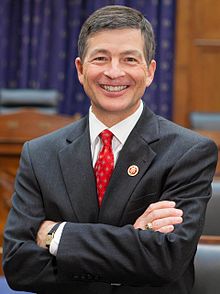By Jim Ellis
Aug. 2, 2021 — Last week’s news reports indicating that western Pennsylvania US Rep. Conor Lamb (D-Mt. Lebanon/Pittsburgh) will enter the open Senate race on Aug. 6, could mean the congressional district he leaves behind becomes a redistricting victim.
Assuming the reports are accurate, and the congressman does launch a Senate campaign, he will be the only Pennsylvania US House delegation member to create an open seat. All others appear poised to run for re-election. This means the Lamb district will likely become the top option for elimination since reapportionment reduces by one the 18-member Keystone State delegation.
The Census Bureau is now telling the states they will finally begin receiving their redistricting data the during the week of Aug. 16. It appears the total data transmission will come in two waves, so all states should have what they need to begin holding public input hearings in early September, and then drawing districts. This is more than six months behind a typical redistricting calendar.
Based upon the latest available information, the state will have 17 congressional districts with a population number of what appears to be just under 765,000 individuals. Looking at the current 18 districts, all must gain population, hence the reason the state is losing another CD. Since 1930, Pennsylvania has lost more congressional districts than any other state.
The region requiring the least new population is Pennsylvania’s southeastern sector, in and around the city of Philadelphia. The western segment is the area that needs the most population with the exception of Rep. Scott Perry’s (R-Dillsburg/Harrisburg/York) south-central 10th District that will require the lowest human increase, most likely fewer than 20,000 persons.
The three seats needing the greatest influx are all in west Pennsylvania, surrounding the city of Pittsburgh. Rep. Glenn “GT” Thompson’s (R-Howard) predominantly rural 15th CD looks to be the district most in need of additional residents, likely over 85,000 individuals. Next is Rep. Mike Kelly’s (R-Butler) 16th District that begins north of Pittsburgh and moves all the way to Lake Erie. This seat would need approximately 80,000 more people. Third is the district south of Pittsburgh to the West Virginia border, Rep. Guy Reschenthaler’s (R-Peters Township) 14th CD, that must also gain another 80,000 bodies.
Lamb’s 17th District that encompasses almost half of Allegheny County, all of Beaver County, and a sliver of Butler, needs over 50,000 more people, which pairs well with Rep. Mike Doyle’s (D-Pittsburgh) downtown 18th District that will likely require approximately 65,000 new residents. Therefore, eliminating District 17 with now no incumbent to protect it would allow the downtown seat to be filled and remain solidly Democratic, but also meet the population needs in the districts to the south, southeast, and north of Pittsburgh.
Politically, such a configuration would likely change the 9R-9D delegation to 9R-8D, and that will be a hard sell for the Republican legislature to make to Democratic Gov. Tom Wolf, especially when he knows a partisan Democratic state Supreme Court could well have the final say once the inevitable lawsuits are filed.
Such a configuration involving the elimination of current District 17 works fairly seamlessly, though, particularly if the final map improves for the Democratic incumbents in the politically marginal eastern PA seats of District 7 (Rep. Susan Wild-D; Allentown/ Bethlehem/Easton), and 8 (Rep. Matt Cartwright-D; Scranton/ Wilkes-Barre/Mt. Pocono). This might be enough to sell a map that forces the Democrats to take the one-seat loss in the west.
There are many ways to re-configure congressional maps, and we will soon see many versions coming from Pennsylvania and all other multi-district states. Rep. Lamb’s move to the Senate race, however, if in fact he ultimately makes the statewide jump, will significantly change the course of Pennsylvania congressional redistricting.





